
Adolf ‘Ada’ VRÁNA
One of the Few
Jeden z hrstky
…………….* 27.10.1908, Nová Paka.
…………….† 25.02.1997, Sutton Veny, UK.
Pre-WW2:
Před druhou světovou válkou:
Adolf ‘Ada’ Vrána was born at Nová Paka on 27 October 1908, the second-born son of Josef Vrána, a police officer, and his wife Františka. After completing his elementary schooling, he briefly found employment as a trainee blacksmith before changing jobs to work as a trainee mechanic at a local power station.
Adolf “Ada” Vrána se narodil v Nové Pace 27. října 1908 jako druhý syn četníka Josefa Vrány a jeho ženy Františky. Po ukončení měšťanské školy se nakrátko stal kovářským učněm, ale brzy přešel do učení na technika v místní elektrárně.
Czechoslovak Air Force:
Československé letectvo:
On reaching the age of 18, he was required to undertake his compulsory military service which commenced on 1 October 1928. He was selected to join the Czechoslovak Air Force and was assigned to the 1st T.G. Masaryk’ Air Regiment at Prague-Kbely airbase for his basic military training and training as an aircraft mechanic. On 28 February 1929, having completed this training, he was posted to the 4th Air Regiment at Hradec Králove airbase where he was an aircraft mechanic.
Když dosáhl osmnácti let, byl od 1. října 1928 povolán na prezenční vojenskou službu. Základní vojenskou službu a výcvik leteckého mechanika si odbyl jako člen Československého letectva u leteckého pluku 1 T. G. Masaryka na letišti v Praze – Kbelích. Po ukončení výcviku, 28. února 1929, byl odeslán jako letecký mechanik k leteckému pluku 4 v Hradci Králové.
However Adolf’s aspiration was to fly and, having volunteered, he was selected for pilot training in August 1929. He was posted to the Military Aviation Academy at Prostějov where he successfully graduated on 1 December 1930, receiving promotion to the rank of četař (Sergeant) on 16 December. Between 16 March and 16 May 1931, he was stationed at the Military Aviation Academy at Chleb for fighter pilot training. Successfully completing this course, he returned to the 4th Air Regiment at Hradec Králove and was assigned to the 41st Fighter Squadron as a fighter pilot.
Jeho přáním však bylo létat. Přihlásil se proto jako dobrovolník k leteckému výcviku. V srpnu 1929 byl vybrán a odeslán na Vojenskou leteckou akademii v Prostějově, kde úspěšně absolvoval 1. prosince 1930, a 16. prosince 1930 byl povýšen do hodnosti četaře. Od 16. března do 16. května 1931 procházel výcvikem stíhacího pilota na Vojenské letecké akademii v Chebu. Po jeho úspěšném ukončení se vrátil k leteckému pluku 4 v Hradci Králové a byl přidělen ke 41. stíhací letce jako polní pilot letec.
In the years that followed, he attended further training courses including night-flying, aerial-observation and, in Boce Kotorské, Yugoslavia, seaplane training. However, Adolf realised that further development of his military career would be restricted because he had left school early without taking school-leaving examinations. To overcome this obstacle, he began a correspondence course to study for his school-leaving certificate whilst simultaneously exercising his military duties. This he achieved, enabling him to enrol at the Military Academy at Hranice in 1934. That August, whilst waiting to be interviewed by the Station Commander-in-Chief at the Academy, he met another cadet airman, Tomáš Vybíral, who was to become a lifelong friend. They were billeted together with both graduating in July 1936.
V následujících letech navštěvoval další letecké kurzy včetně nočního létání, leteckého pozorování a v Boce Kotorské v Jugoslávii také výcvik na plovákových letounech. Adolf si uvědomil, že další pokrok v jeho vojenské kariéře bude omezen skutečností, že odešel ze školy v příliš mladém věku a nesložil maturitu. Rozhodl se proto zapsat se do korespondenčního kurzu a doplnit si vzdělání při současném plnění svých služebních povinností. Po jeho absolvování mohl v roce 1934 nastoupit na Vojenskou akademii v Hranicích. V srpnu toho roku, když čekal na pohovor u velitele akademie, se setkal s leteckým kadetem Tomášem Vybíralem a stali se z nich nejlepší přátelé. Po dobu studia spolu bydleli a oba absolvovali v červenci 1936.
On 1 August 1936, at the rank of poručík (P/O) he was posted to the 91st Squadron of the 6th Air Regiment which was then the only night-fighter squadron in the Czechoslovak Air Force. That October he returned to the Military Academy at Prostějov for an instructor’s course, graduating on 30 January 1937. On 9 February 1937, he returned to the Military Aviation Academy at Chleb and then to Prostějov as a flying instructor. His next posting was to the Leteckém ústavě, the Aviation Research Institute, at Prague-Letňany airbase where he was a test pilot. By 15 March 1939, when the Germans occupied Czechoslovakia, he had achieved 2,088 flying hours.
1. srpna 1936 byl v hodnosti poručíka odeslán k 91. letce leteckého pluku 6, která byla v té době jedinou letkou nočních stíhačů v československém letectvu. V tomtéž roce se v říjnu vrátil na Leteckou akademii do Prostějova k vykonání instruktorských zkoušek, které složil 30. ledna 1937. 9. února 1937 se vrátil na Vojenskou leteckou akademii v Chebu, a později do Prostějova jako letecký instruktor. Jeho následujícím umístěním byl Vojenský technický a letecký ústav v Praze – Letňanech, kde působil jako zkušební pilot. Do německé okupace Československa, 15. března 1939, nalétal 2.088 hodin.
German Occupation:
Německá okupace:
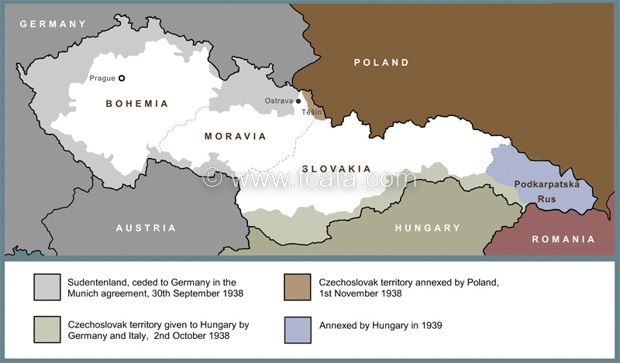
Czechoslovakia, Autumn 1938. / Československo, podzim 1938.

On his way to Poland. / Na ceste do Polska.
Immediately after the German occupation of Czechoslovakia, the Czechoslovak Air Force was disbanded by the Germans and all personnel dismissed. On 1 July 1939 Adolf escaped to Poland and reported for duty at the Czechoslovak Consulate in Krakow. The Czechoslovak escapees were billeted at Malý Bronowice, a former Polish army camp outside Krakow, and it was here that Adolf was to meet with Tomáš again, Tomáš being heavily involved in organising escapers for their onward journey to France. After a short time there, along with other escapee Czechoslovak airmen, Adolf travelled by train to Gydnia, Poland where they boarded the ‘Kastelholm’, a Swedish coastal-cruising ship, and sailed for Calais, France.
Bezprostředně po německé okupaci Československa bylo československé letectvo rozpuštěno a jeho příslušníci propuštěni ze služby. Adolf uprchl 1. července 1939 do Polska a přihlásil se do služby na konzulátu ČSR v Krakově. Českoslovenští uprchlíci byli ubytování v bývalých kasárnách Polské armády v obci Male Bronownice nedaleko Krakova. Zde se opět setkal s Tomášem Vybíralem, který se aktivně podílel na organizování dalšího pokračování cesty uprchlíků z Polska do Francie. Po krátkém pobytu v táboře se Adolf vydal vlakem do Gdyně, kde se nalodil na švédskou vyhlídkovou loď “Kastelholm” a odplul do Calais ve Francii.

To France aboard the Kastelholm. / Cestou do Francie na palubě Kastelholmu.
France:
Francie:
On arrival in France, Czechoslovak escapees were required to join the French Foreign Legion for a five year period with the agreement that, should war be declared, they would be transferred to French military units. Adolf, with the rank of Sergeant, was at the Legion’s barracks at Nanterre, near Paris, awaiting medical examination and documentation to be completed prior to transfer to the Legion’s training base at Sidi-bel-Abbès, Algeria. Fortunately for him, war was declared before he was sent to Algeria. Instead, on 9 October he was released from the Legion’s service and transferred to l’Armée d’Air at their Paris recruitment centre and then on to Centre d’Instruction de Chasse for re-training on French equipment and to learn rudimentary French at Chartres airbase where again he was to meet with Tomáš.
Po příjezdu do Francie byli českoslovenští uprchlíci vyzváni ke vstupu do cizinecké legie s úvazkem na pět let s dohodou, že pokud vypukne válka, budou převedeni k francouzským vojenským jednotkám. Adolf, v hodnosti četaře, byl umístěn do kasáren cizinecké legie v Nanterre, nedaleko Paříže, a čekal zde na zdravotní prohlídku a vyřízení dokumentace před přesunutím do výcvikového tábora cizinecké legie v alžírském Sidi-bel-Abbès. Naštěstí pro něj došlo k vyhlášení války dříve, než byl do Alžíru přesunut. Místo toho byl 9. října z cizinecké legie propuštěn a převeden k l’Armée d’Air do náborového centra v Paříži a potom do Centre d’Instruction de Chasse k přeškolení na francouzskou techniku a studiu základů francouzštiny na letišti v Chartres, kde se opět setkal s Tomášem.
Adolf completed his re-training, achieving a further 38 flying hours to add to his record, and on 1 May 1940 was promoted back to the rank of Sergeant within l’Armée d’Air. Ten days later, Tomáš and he were posted to GC I/5, a fighter squadron based at Suippes airbase near Rheims and equipped with Curtis H-75c aircraft. Adolf was assigned to number I escadrille and Tomáš to number II escadrille of that unit. Amongst other Czechoslovak pilots already with GC I/5 were Alois Vašátko and František Peřina, both of whom were to achieve considerable success in combat during the forthcoming Battle of France.
Adolf ukončil přeškolení a nalétal při tom dalších 38 hodin. 1. května získal u l’Armée d’Air zpět hodnost poručíka a o deset dnů později byl spolu s Tomášem převelen ke GC I/5, stíhací peruti umístěné na letišti v Suippes nedaleko Rheims, vybavené stroji Curtiss H-75c. Adolf byl přiřazen k 1. letce, Tomáš pak 2. letce této jednotky. Mezi československými letci, kteří už u GC I/5 působili, byli i Alois Vašátko a František Peřina, kteří v nadcházející bitvě o Francii dosáhli významných úspěchů.
The Germans invaded France on 10 May 1940. During the ensuing Battle of France, Adolf flew 30 operational hours, often being scrambled three times a day and achieving combat success during heavy fighting with the Luftwaffe:
Německo Francii napadlo 10. května 1940. Během bitvy o Francii Adolf nalétal 30 operačních hodin, často startoval i třikrát denně a v těžkých střetnutích s Luftwaffe dosáhl těchto bojových úspěchů:
On 13 May, he was shot down during combat with a Luftwaffe Me 109. Although slightly wounded, he managed to bail-out of his Curtis 75a and parachuted to safety.
13. května byl sestřelen v souboji s německým Me 109, lehce zraněn vyskočil ze svého Curtissu 75a na padáku a bezpečně přistál.
The rapidity of the Blitzkrieg instigated frequent changes of GC I/5 fighter squadron’s airfields as they retreated westward. By 20 June they had already moved three times and were now at La Salanque airbase near Perpignan in Southern France. Later that day, the unit was ordered to evacuate from mainland France and fly to Maison Blanche airbase in Algeria. Forty-five aircraft prepared to depart. Adolf had already started the engine of his Curtis when he noticed that Tomáš’s aircraft would not start and that he would have been left behind. Without a second thought, Adolf left his cockpit, went over to Tomáš’s Curtis’ aircraft with a starting handle, mounted it to the engine and started to rotate the handle until the engine burst into life. They then both took-off for the flight to Maison Blanche.
Rychlost Blitzkriegu způsobovala u perutí GC I/5 při postupném ústupu na západ časté změny letišť a postupný ústup na západ. Do 20. června se přesunuly již třikrát, a nyní působily na letišti v La Salanque nedaleko Perpignanu v jižní Francii. Ten den dostala jednotka rozkaz opustit Francii a evakuovat se na letiště v Maison Blanche v Alžíru. Čtyřicet pět strojů se připravilo k odletu. Adolf už nastartoval motor svého Curtisse, když si všiml, že Tomášův stroj nestartuje a on tedy neodletí. Bez přemýšlení vystoupil z kokpitu, přišel se startovací klikou v ruce k Tomášovu letounu, připojil ji a roztáčel jeho motor tak dlouho, dokud nenaskočil. Potom oba společně odletěli do Maison Blanche.
| Date Datum | Time Čas | Aircraft Letoun | Action Akce |
| 25/05/40 | 10:30 | Curtis 75a | a Hs 126 shared victory near Boult-aux-Bois. Sdílený sestřel Hs 126 u Boult-aux-Bois. |
| 26/05/40 | 12:10 | Curtis 75a | a He 111 shared victory near Tannay, South of Sedan. Sdílený sestřel 111 poblíž Tannay, jižně od Sedanu. |
| 07/06/40 | 10:15 | Curtis 7ac | a Hs 126 shared probable, North East of Soissons. Sdílený pravděpodobný sestřel Hs 126 severovýchodně od Soissons. |
Shortly after their arrival in Algeria, the unit was redeployed from Maison Blanche to Oran and it was there that they learned that France had capitulated. Winston Churchill, the British Prime Minister, appealed to all the evacuated Czechoslovak airmen to come to Britain and continue the fight from there. The l’Armée de l’Air released the Czechoslovak airmen from their service so that they could make their journey to Britain.
Krátce po příletu do Alžíru byla jednotka přesunuta z Maison Blanche do Oranu a tam se dozvěděli o francouzské kapitulaci. Britský ministerský předseda Winston Churchill vyzval všechny československé letce k přesunu do Británie a pokračování v boji. l’Armée de l’Air propustila Čechoslováky ze svých služeb, takže se mohli vydat na cestu do Británie.
On 24 June 1940, at a farewell ceremony for the squadron in Oran, four Czechoslovak airmen, Alois Vašátko, František Peřina, Tomáš Vybíral and Adolf Vrána, were awarded the Knights of the Order of Honour of Legion, along with the Croix de Guerre with Palm for their bravery during the Battle of France.
Při ceremoniálu na rozloučení s perutí 24. června 1940 v Oranu byli čtyři českoslovenští letci, Alois Vašátko, František Peřina, Tomáš Vybíral a Adolf Vrána, oceněni za statečnost v bitvě o Francii řády Chévalier de la Légion d‘Honneur a Válečným křížem s palmovými ratolestmi.
The Czechoslovak airmen then traveled four days by train, from Oran to Casablanca, Morocco, where they then boarded HMS Royal Scotsman which sailed to Gibraltar on 9 July and from where they embarked on to the MV David Livingstone. On 21 July 1940, now aboard a ship which was in a convoy of sixty-nine vessels, they sailed for the UK, arriving in Cardiff on 5 August 1940.
Českoslovenští letci pak cestovali vlakem čtyři dny z Oranu do Casablanky v Maroku, kde se nalodili na HMS Royal Scotsman, který je přivezl 9. července do Gibraltaru. Zde se nalodili 21. července 1940 na MV David Livingstone, loď, která plula jako součást konvoje šedesáti devíti plavidel. Do Cardifu v Británii dorazili 5. srpna 1940.
RAF:
On arrival in the UK, they were taken to the Czechoslovak transit camp at Cholmondeley, near Chester, before being transferred to the Czechoslovak Airmen’s Depot at Cosford, Wolverhampton. Adolf was accepted into the RAF Volunteer Reserve on 6 August 1940 and granted the rank of P/O ten days later. On 5 September he was posted to the newly formed 312 (Czechoslovak) Squadron based at Duxford and equipped with Hurricane I’s, thus becoming one of the squadron’s founding members.
Po příjezdu do Británie byli umístěni do Československého tranzitního tábora v Cholmondeley, nedaleko Chesteru, a následně přesunuti k náhradnímu praporu československých letců do Cosfordu ve Wolverhamptonu. Adolf byl 6. srpna 1940 přijat k RAF Volunteer Reserve a o deset dnů později mu byla přiznána hodnost poručíka. 5. září byl poslán k nově se formující 312. (československé) peruti v Duxfordu, vybavené Hurricany Mk I. Stal se tak jedním z jejich zakládajících členů.

Adolf Vrána with 312 Sqn at Duxford Summer 1940. / Adolf Vrána u 312, perutě v Duxfordu, léto 1940
Battle of Britain:
Bitva o Británii:
The Battle of Britain was now reaching a critical phase with the RAF having a desperate need for more pilots. Thus, for the Czechoslovak pilots arriving at Duxford, the priority was a case of undertaking a crash course in rudimentary English, learning RAF radio codes in the Officers’ Mess and immediate, hasty re-training on Hawker Hurricane fighter aircraft. Adolf made his maiden Hurricane flight the day after his arrival. On 26 September, 312 Squadron was deployed to Speke airfield where its role was the defense of Liverpool and its docks. The squadron was declared operational on 2 October and on 21 October Adolf made his first operational sortie flying a Hurricane MkI P3810 in the Battle of Britain. He was to make a further three sorties during that battle but without any contact with the Luftwaffe.
Bitva o Británii právě vstupovala do rozhodující fáze a RAF nutně potřebovala další piloty. Českoslovenští letvi přicházející do Duxfordu měli za úkol především zvládnout v improvizované učebně v důstojnické jídelně základy angličtiny a radiové kódy RAF, a pak bleskové přeškolení na stíhačku Hawker Hurricane. Adolf zasedl poprvé do kokpitu Hurricanu den po svém příjezdu. 26. července 1940 byla 312. peruť přesunuta do Speke a jejím úkolem se stala obrana Liverpoolu a tamních doků. Peruť byla prohlášena za bojeschopnou 2. října 1940 a Adolf ten den uskutečnil na Hurricanu Mk I P3810 svůj první bojový let v bitvě o Británii. V průběhu bitvy uskutečnil ještě další tři bojové lety, ale bez kontaktu s letadly Luftwaffe.
On completion of his Operational Tour in January 1941, now at the rank of F/O, Adolf was initially posted for three months to No.3 Delivery Flight, based at Hawarden, Wales, delivering replacement aircraft. He was next posted, on 12 July 1941, to 310 (Czechoslovak) Squadron based at Martlesham Heath and equipped with Hurricane Mk IIbs. Here he was promoted to the rank of F/Lt and, having a ground-based role serving in the Operations Room as a Flight Control Officer, he remained there until 21 June 1942 when he returned to 312 Squadron, now deployed at Harroebeer. Despite now being 33 years old, he was able to return to operational flying. He was appointed Flight Commander of ‘B’ Flight from 25 August 1942 until 29 September, and again on 1 January 1943, when his old friend Tomáš became Commanding Officer of the squadron.
Po ukončení svého operačního turnusu v lednu 1941, nyní v hodnosti nadporučíka, byl Adolf nejdříve poslán na tři měsíce ke 3. Delivery Flight umístěné ve waleském Harwardenu, která doručovala náhradní letadla. Následně byl 12. července 1941 poslán k 310. (československé) peruti umístěné v Martlesham Heath, vybavené Hurricany Mk IIb. Zde byl povýšen do hodnosti kapitána a převzal pozici v operační místnosti jako důstojník letové kontroly. Zůstal do 21. června 1942, kdy se vrátil ke 312. peruti, nyní umístěné v Harroebeer. Ačkoliv mu již bylo 33 let, dokázal se vrátit k aktivnímu létání. Od 25. srpna do 29. září 1942 působil jako velitel letky “B” a později se jím stal ještě jednou, 1. ledna 1943, když se jeho starý přítel Tomáš Vybíral stal velitelem perutě.

Adolf Vrána, RAF / Adolf Vrána, RAF.
Adolf’s second Operational Tour was completed on 1 June 1943, his next posting being to the Czechoslovak Inspectorate General (CIG), in London. Two weeks later he was posted to 312 Squadron’s Operations Room, now deployed at Skara Brae in the Orkney Islands. On 10 September 1943, he attended a three-week flight-controllers course at RAF Fighter Command Headquarters at Stanmore, London. His next posting on 1 October 1943 was as Head of Radar Control at RAF Sopley, in Hampshire, a Ground Controlled Interception station. His last posting was on 31 January 1944 when he was appointed the Czechoslovak Liasion Officer at RAF Fighter Command Headquarters, undertaking various roles in the Operations Room until the end of the war.
Adolfův druhý operační turnus skončil 1. června 1943, a po něm byl umístěn na československý inspektorát (CIG) v Londýně. O dva týdny později odešel do operační místnosti 312. perutě, nyní umístěné ve Skara Brae na Orknejích. 10. září 1943 prošel třítýdenním výcvikem letového kontrolora na velitelství Fighter Command ve Stanmore v Londýně. Jeho dalším umístěním bylo od 1. října 1943 Head of Radar Control na základně RAF v Sopley, v hrabství Hampshire, stanici Ground Controlled Interception. Poslední službou u RAF pro něj bylo od 31. ledna 1944 místo Czechoslovak Liasion Officer v RAF Fighter Command Headquarters, kde plnil do konce nejrůznější úkoly v operační místnosti.

Adolf Vrana, Major Czechoslovak Air Force. / Major Adolf Vrána v uniformě čs. letectva
Post WW2:
Po druhé světové válce:
Adolf returned to Czechoslovakia on 18 August 1945 and remained in the Czechoslovak Air Force. His first posting was to the Ministerstvu obrany (Ministry of Defence) in Prague and, as a Staff Officer, he was instrumental in the rebuilding of the Czechoslovak Air Force. In September 1946, in recognition of his wartime service, he was simultaneously awarded his second, third and fourth Válečný kříž 1939 (War Cross). On 2 March 1948, he was promoted to the rank of podplukovník (Lieutenant Colonel) and appointed Commander at Prague-Kbely airbase.
Adolf Vrána se vrátil do Československa 18. srpna 1945 a zůstal v československém letectvu. Jeho prvním místem bylo Ministerstvo národní obrany v Praze, kde se podílel na poválečné obnově vojenského letectva. V září 1946 byl vyznamenán svým druhým, třetím a čtvrtým Válečným křížem 1939. 2. března 1948 byl povýšen do hodnosti podplukovníka a převelen jako velitel na letiště v Praze – Kbelích.
Following the Communist take-over in February 1948, the Czechoslovaks who fought for the Allies in WW2 were regarded as being tainted by capitalism and thus ‘undesirable’ in the new Czechoslovak regime. Many were dismissed from the military, demoted, stripped of their Czechoslovak decorations, arrested, imprisoned and subjected to other persecution and degradation. Some, however, managed to escape back to the West, one of whom was Adolf. In his case, he was placed on ‘waiting leave’ and aware of the most likely outcome of that action – arrest by the StB – Státní bezpečnost, the state secret police – and imprisonment. He requested to leave the Czechoslovak Air Force, this being granted to leave on 1 March 1949. Anticipating that he would be arrested like many of his former RAF colleagues, he began to prepare to go into exile again. This was achieved on 15 November 1949 when, with his British wife Kathleen, they escaped over the border into the American Zone of Germany.
Po komunistickém převratu v únoru 1948 byli Čechoslováci bojující na straně západních spojenců označeni jako lidé nakažení kapitalismem, a jako takoví byli pro nový režim “nežádoucí”. Mnozí z nich byli uvolněni ze služby v armádě, zbaveni hodností a československých vyznamenání, uvězněni a podrobeni pronásledování a ponižování. Někteří z nich dokázali uniknout na západ. Jedním z nich byl i Adolf Vrána. V jeho případě došlo k umístění na čekací listinu a byl upozorněn na to, co bude nejspíš následovat zatčení StB a uvěznění. Požádal si o uvolnění ze služeb československého letectva, což mu bylo umožněno 1. března 1949. Jelikož předpokládal, že by mohl být, podobně jako mnoho jeho bývalých spolubojovníků z RAF, uvězněn, začal se připravovat na další odchod do exilu. K tomu došlo 15. listopadu 1949, když se svou britskou manželkou Kathleen překročili hranici americké zóny v Německu.
After security vetting in Germany, he was able to return to England where in 1950 he rejoined the RAF on a Short Service Commission, but now at the lower rank of F/O, compared to his previous RAF rank of F/Lt. Later this was changed to a permanent commission. He served as a Flight Controller at RAF airbases in North Africa and Cyprus, retiring from the RAF at the age of 53 and with the rank of F/Lt in 1961. He subsequently became a civilian instructor at the RAF Technical School.
Když prošli v Německu všemi kontrolami, bylo jim umožněno vrátit se do Anglie, kde se v roce 1950 stal opět členem RAF s dočasným služebním zařazením, které se později změnilo na trvalé umístění, nyní však v nižší hodnosti nadporučíka odpovídající jeho předcházející hodnosti v RAF. Sloužil jako letový kontrolor na základnách RAF v severní Africe a na Kypru. Z RAF odešel v 53 letech v roce 1961 v hodnosti kapitána a stal se civilním instruktorem na RAF technical school.
In May 1990 he was made an honorary citizen of his native Nová Paka. In September the following year, at the RAF Rehabilitation Ceremony, in Prague, he was promoted to the rank of Plukovnik (Colonel) in the Czechoslovak Air Force. Sadly, by now his health had deteriorated with Alzheimers making it impossible to return to his homeland to attend these events. Since his wife had pre-deceased him in 1987, he was now resident in a nursing home at Sutton Veny, near Warminster in Wiltshire.
V květnu 1990 se stal čestným občanem rodné Nové Paky. V září příštího roku jako součást morální a politické rehabilitace československých letců RAF přijal povýšení do hodnosti plukovníka v.v. československého letectva. Jeho zdraví mu v té době již bohužel neumožňovalo cestovat a zúčastnit se slavnostního ceremoniálu osobně. Jelikož ho jeho žena předešla a zemřela v roce 1987, žil již plukovník Vrána v té době v domově pro seniory v Sutton Veny, poblíž Warminsteru v hrabství Wiltshire.
He died on 25 February 1997, aged 88 at Sutton Veny.
Zde také 25. února 1997 ve věku 88 let zemřel.
_______________________________________________________________
Medals:
Medaile, vyznamenání:
_______________________________________________________________

1939 – 45 Star with Battle of Britain clasp
Air Crew Europe Star
Defence Medal
War Medal
Post WW2
General Service Medal with Cyprus clasp
_______________________________________________________________
Czechoslovakia / Československo:

Válečný kříž 1939 and 3 bars
Za chrabrost před nepřítelem
Za zásluhy I.stupně
Pamětní medaile se štítky F–VB
_______________________________________________________________

Chevalier de la Légion d’Honneur
Croix de Guerre avec palme
_______________________________________________________________
Remembered:
Památná místa:
_______________________________________________________________
Great Britain:
Velká Británie:
_______________________________________________________________
He is commemorated, along with the other 2938 Battle of Britain aircrew, on the Christopher Foxley-Norris Memorial Wall at the National Battle of Britain Memorial at Capel-le-Ferne, Kent:

_______________________________________________________________
He is also commemorated on the London Battle of Britain Memorial:

_______________________________________________________________
Czech Republic:
Česká republika:
_______________________________________________________________
Nová Paka:
In September 2020, a memorial plaque for him was unveiled at Nová Paka.
V září 2020 mu byla v Nové Pace odhalena pamětní deska.

_______________________________________________________________
Prague 1 – Klárov:
In November 2017, his name, along with the names of 2507 other Czechoslovak men and women who had served in the RAF during WW2, was unveiled at the Winged Lion Monument at Klárov, Prague 1.

_______________________________________________________________
Article last updated 28.04.2024.

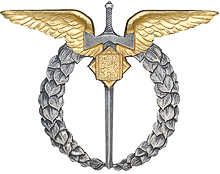




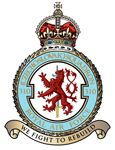
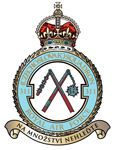
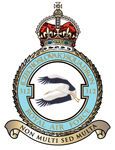
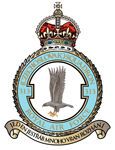


I live in the house that Adolf renovated and lived in with his wife Kathleen at the end of the War.
They named the cottage Crows Nest Crow being VRANA In Czech.
He had a blacksmith work shop in the under Croft of the house which is still there today with many examples of his wrought iron craftsmanship in my possession.
He was a teacher at Bath University teaching Wrought iron work (blacksmiths).
I have the deeds of the 1951 purchase and sale of the house with Adolf and Kathleen signatures on also aerial pictures of the cottage and his allotment.
He came back to visit around 1990 and he was amazed at the size of the horse chestnut tree he had planted 40 years earlier.
An amazing Man RIP we owe him so much.
I have a lamp stand made by him and I visited the house the Crows Nest with its wonderful array of iron work hanging off the walls.
I used to visit the “Crow’s Nest” regularly as a child. My father was in the Battle of Brittain, and my parents knew them, and became good friends during the war. I knew them as Kim, and Ada, I did not know Kim was short for Kathleen. My father, and Ada used to go to the Battle of Brittain reunions together. I used to love the well in the garden as a child. I have very fond memories of them.
Regards,
Annette Russett nee Maggs.
Adolf Vrana was a friend of my father’s and I remember visiting him and his wife at their home when I was a teenager. He made 2 beautiful ornate magazine racks for my parents on their I marriage. I remember him as a very kind man. It was interesting to read the piece. I think my father must have met Adolf at Chleb where my father trained in 1934.
I was so supprised when I came across Ada on line. My parents knew him during the war, and became good friends. We used to visit him, and Kim regulary at “The Crow’s Nest” when I was a child, I used to love the well in the garden. I also met his mother when she visited. My father was the oldest surviving member of the Battle of Brittain, and he and Ada used to go to the reunions together.
Wonderful article about one of the heros of the last War, and obviously a man who was driven to improve and succeed in his chosen career.
When looking at the Squadron ( 312 ) picture, I recognised my father in the photograph, middle row , very far left. I have his RAF records which show that he joined 312 Squadron in September 1940, from 310 Squadron. He was a highly qualified engineer and spent his service time with the Technical Branch ( engineers ) RAFVR.